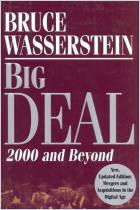Join getAbstract to access the summary!

Join getAbstract to access the summary!
Patrick A. Gaughan
Mergers
What Can Go Wrong and How to Prevent It
Wiley, 2005
What's inside?
CEOs love doing M&A deals, but most of the time they don’t work. If you must merge, go into it with your eyes open.
Recommendation
Many books deal with mergers and acquisitions (M&As) and how to conduct them; this one focuses primarily on the likelihood that your costly deal will fail. Patrick Gaughan tells you how to avoid bad deals, how to undo them, and what alternatives to consider before entering into an acquisition. The book is full of valuable and even interesting information, and Gaughan’s experience on the legal side of the M&A process shows through – sometimes in the form of stilted language. getAbstract recommends this book to high-level executives, lawyers, and anyone else who stands a chance of getting involved in M&A activity.
Summary
About the Author
Patrick Gaughan is president of a consulting firm that provides valuations for mergers and acquisitions. He is an economics and finance professor at Fairleigh Dickinson University.





















Comment on this summary